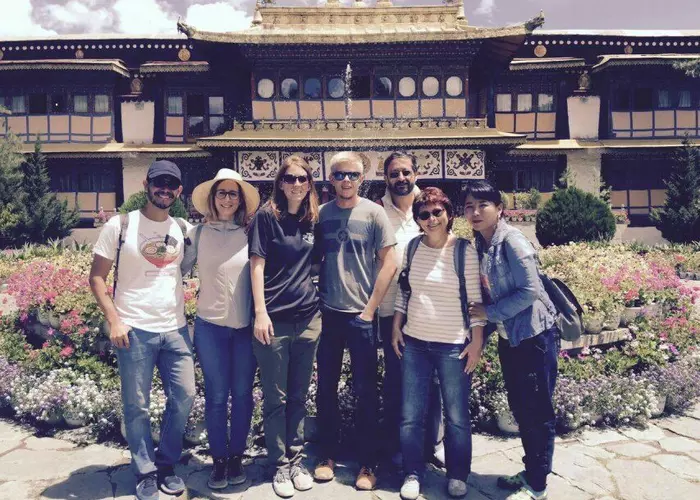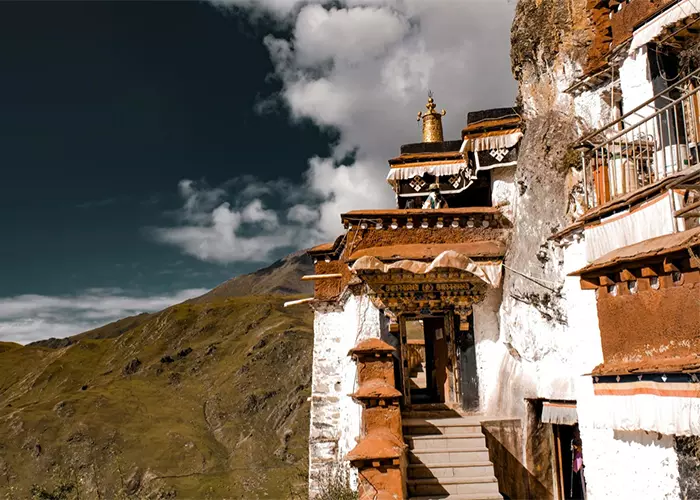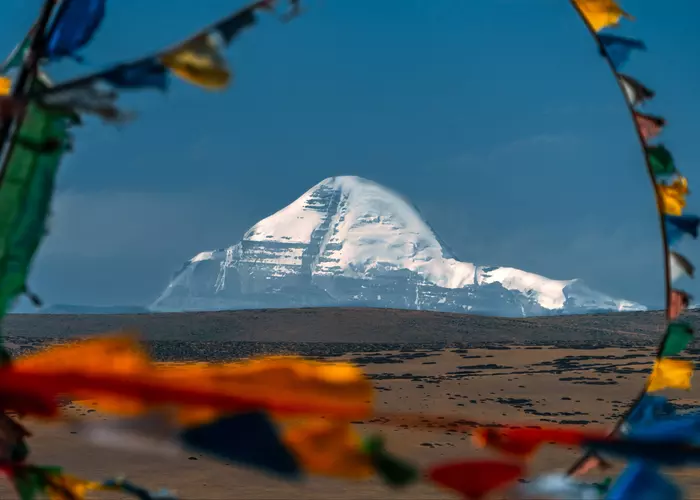More About Culture in Tibet
Tibetan Tea
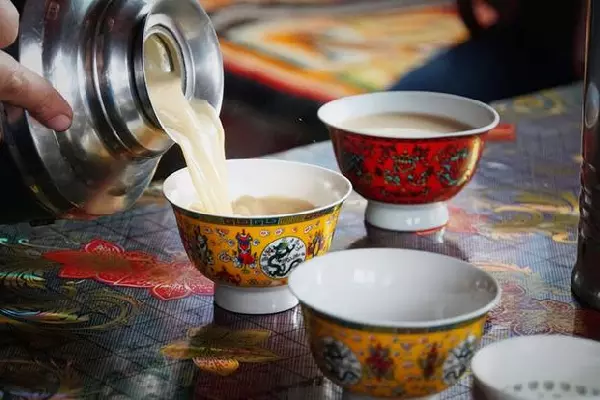 Tea in Tibet is said to have been brought by Princess Wencheng as a dowry. Throughout history, the people here have developed a Tibetan diet, among which butter tea is a wholesome drink known for its nutrition and unique making method. Butter tea can produce high calories, which can prevent cold in high-altitude regions. It is a very suitable tea in Tibet. Until now, the tea culture on the Tibetan Plateau has developed for over one thousand years.
Tea in Tibet is said to have been brought by Princess Wencheng as a dowry. Throughout history, the people here have developed a Tibetan diet, among which butter tea is a wholesome drink known for its nutrition and unique making method. Butter tea can produce high calories, which can prevent cold in high-altitude regions. It is a very suitable tea in Tibet. Until now, the tea culture on the Tibetan Plateau has developed for over one thousand years.
Butter tea, with unique Tibetan ethnic characteristics, has been integrated into social customs, etiquette, and daily life. Drinking a bottle of tea is an indispensable part of Tibetan social life. Tibetan people will serve up a cup of butter tea to guests from far away, which is a custom in Tibet and shows respectful, harmonious, and peaceful relief in their lives. In the hall of the railway station or airport, it is common to find people carrying warm water bottles filled with butter tea to see their relatives or friends off. To celebrate the new birth of a baby, friends, or family will bring butter tea as a gift. In the hospital, a bottle of butter tea can comfort a patient much. >>Read more
Tibetan Opera
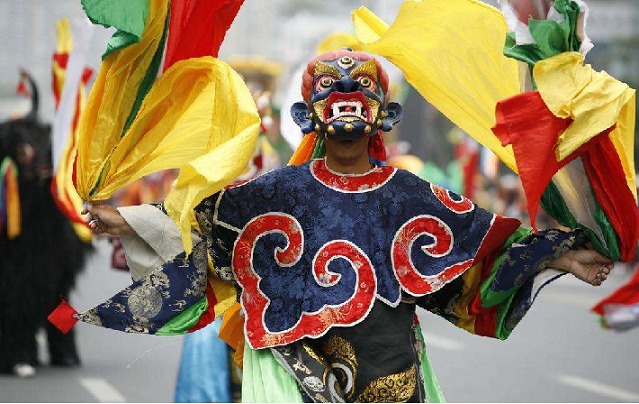 Due to the differences in natural conditions, customs, cultural traditions, and dialects across the Qinghai-Tibet Plateau, Tibetan Opera has developed into several varieties and schools. Tibetan Opera originated 600 years ago, 400 years earlier than Beijing Opera, so it’s been called the living fossil. The art of Tibetan opera was derived from Tibetan opera, which is spread by the monks and pilgrims to the Tibetan areas in Qinghai, Gansu, Sichuan, and Yunnan. It’s also been circulated to India and Bhutan.
Due to the differences in natural conditions, customs, cultural traditions, and dialects across the Qinghai-Tibet Plateau, Tibetan Opera has developed into several varieties and schools. Tibetan Opera originated 600 years ago, 400 years earlier than Beijing Opera, so it’s been called the living fossil. The art of Tibetan opera was derived from Tibetan opera, which is spread by the monks and pilgrims to the Tibetan areas in Qinghai, Gansu, Sichuan, and Yunnan. It’s also been circulated to India and Bhutan.
There are many kinds of Tibetan Opera, and the mainstream is the blue mask opera. The traditional performance of this blue mask opera is divided into three parts. The first part is the open ceremony called “Dun”, with actors performing sacrificial songs and dances. The second part is called “Xiong”, with actors playing the historical story or legend. The third part is a greeting part called “Taxi” which means blessing. The actors never make up, and they only wear masks to perform from the beginning to the end.
Under the restrictions of religion, Tibetan culture has been less influenced by the mainland and has kept its original features. You can enjoy the Tibetan Opera during festivals and celebrations.
Prayer Flag
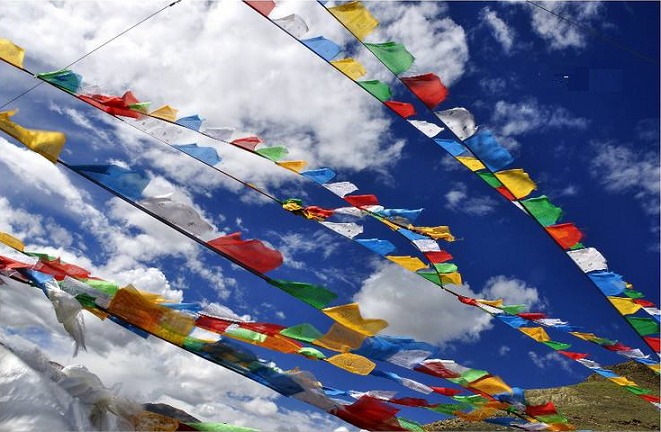 Prayer flags were used as talismans to protect Tibetans during the war, starting from the Bon religion. It’s printed with the Buddhist scriptures. The locals believe that every time the prayer flags blow in the wind, it means chanting sutras once and conveying good wishes. For this reason, long prayer flags are tied to windy places, such as high passes and riversides; short prayer flags are tied on the branches of trees in front of squares and monasteries.
Prayer flags were used as talismans to protect Tibetans during the war, starting from the Bon religion. It’s printed with the Buddhist scriptures. The locals believe that every time the prayer flags blow in the wind, it means chanting sutras once and conveying good wishes. For this reason, long prayer flags are tied to windy places, such as high passes and riversides; short prayer flags are tied on the branches of trees in front of squares and monasteries.
They decorated the images of the snow lion, dragon, and tiger on the flag. Gradually, prayer flags became one of the parts of Tibetan Buddhism and added prayers or messages of hope and peace. There are five different colors of Tibetan prayer flags with different significant meanings: blue stands for wind, white for air, red for fire, green for water, and yellow for earth. Prayer flags should be updated every year, and the date to change the prayer flags is based on the Tibetan Calendar. >> Read more
Sky Burial
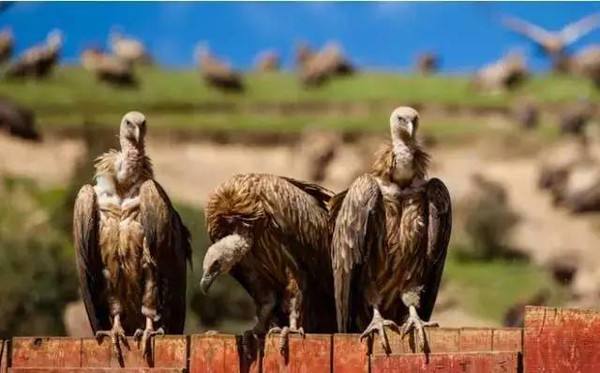 Sky burial is a traditional way of burial in Tibet. After death, the body will be dismembered and taken to a particular place to feed vultures. It is not the only kind of burial, but it is the most popular way to dispose of the dead in Tibet.
Sky burial is a traditional way of burial in Tibet. After death, the body will be dismembered and taken to a particular place to feed vultures. It is not the only kind of burial, but it is the most popular way to dispose of the dead in Tibet.
Tibetans have devoted their lives to Buddhism and believe that death only separates the body and the immortal soul. The core of the sky burial is immortality and reincarnation. Sky burial is highly regarded by Tibetans, as they believe that feeding vultures with the discarded body is the most honorable almsgiving, reflecting the highest realm of Mahayana Buddhism - devotion. It’s not like some tourism guidebook mentioned that sky burial is a way to send the soul-spirit to heaven. There’s no such saying in Tibetan Buddhism. >>Read more
Sand Mandala
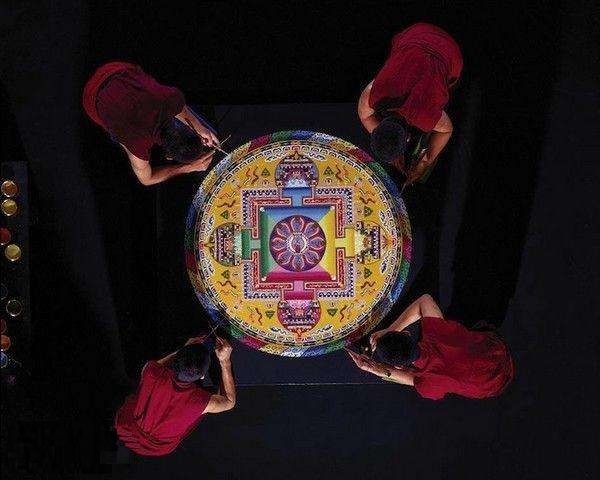 Sand Mandala, དཀྱིལ་འཁོར། in Tibetan, is the most exquisite Buddhist art in Tibet. The monks in the monastery use colorful sand to paint their ideal Buddhist world during significant religious events. They may paint it for several days or even months.
Sand Mandala, དཀྱིལ་འཁོར། in Tibetan, is the most exquisite Buddhist art in Tibet. The monks in the monastery use colorful sand to paint their ideal Buddhist world during significant religious events. They may paint it for several days or even months.
However, the masterpiece with the monks’ great efforts is not used to show off their beauty to people. The Buddhist world painted with sand will be swept away once it's finished without any hesitation. Colorful sand will be put into bottles and dumped into the river.
Some explain that the theme of the Sand Mandala is to show the illusion of the world. For Lamas, they only destroy the external paintings and firmly keep their inner Mandala. It also shows the transience of life. >>Read more


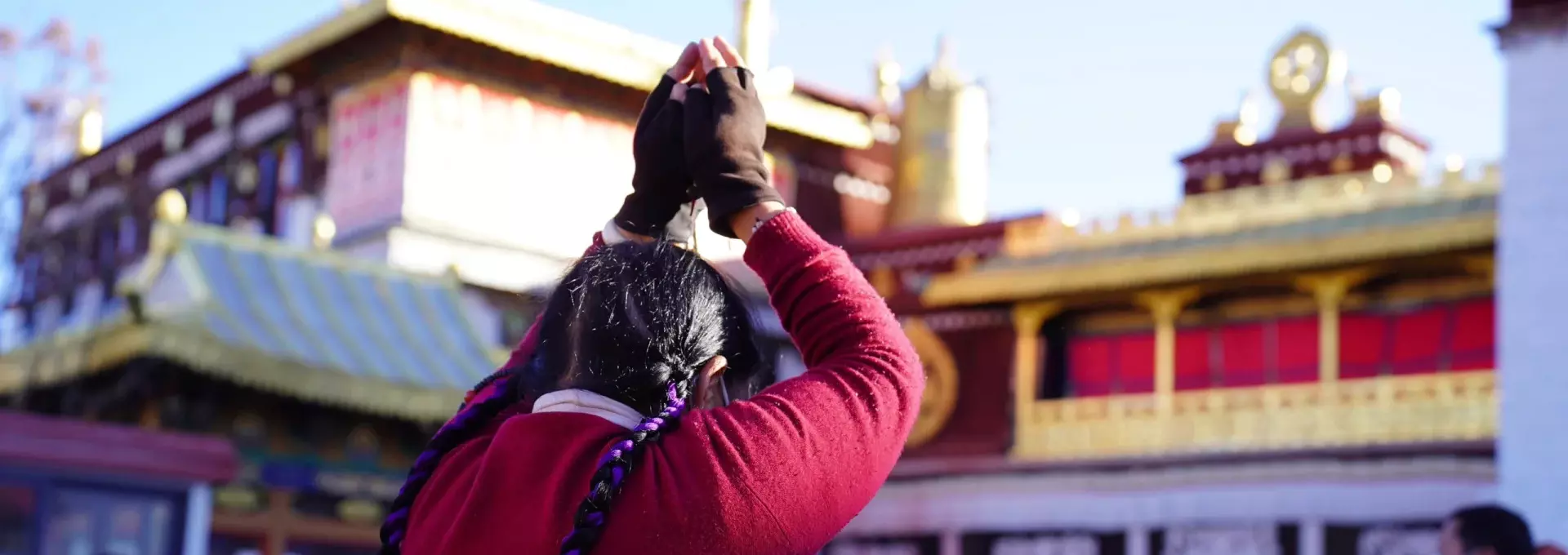
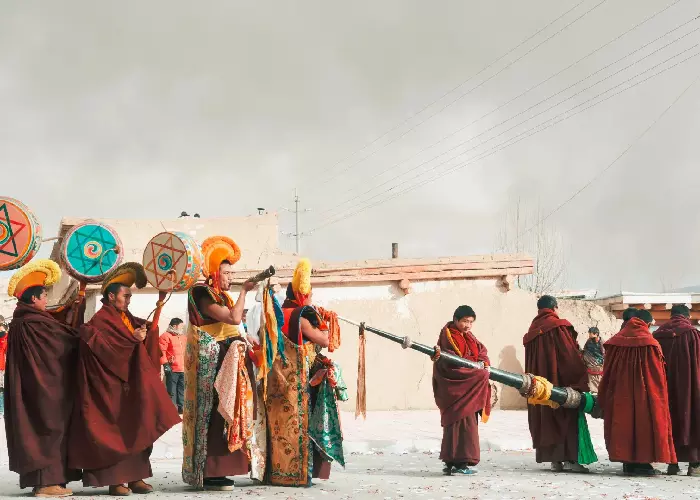
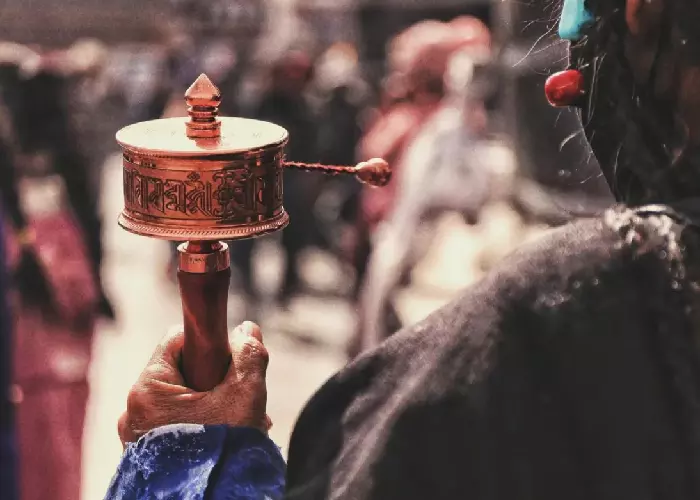
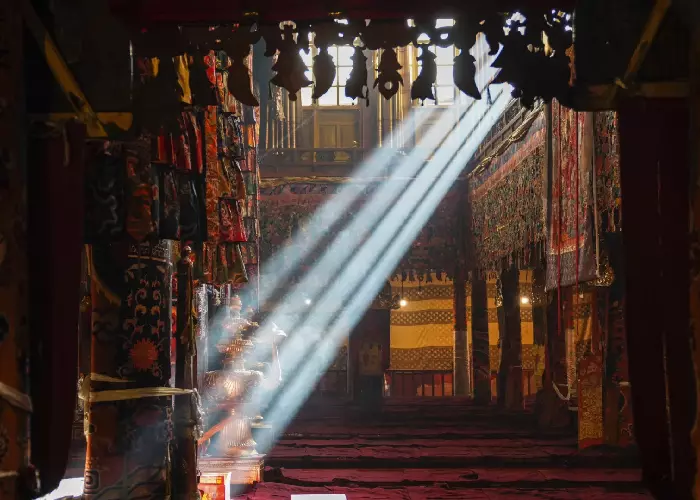
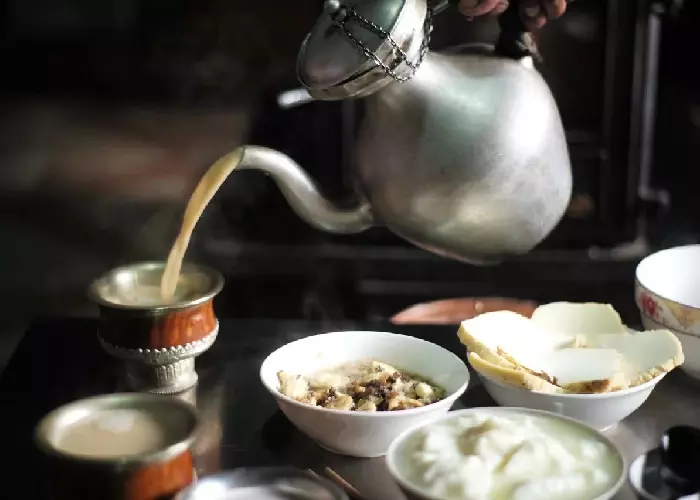
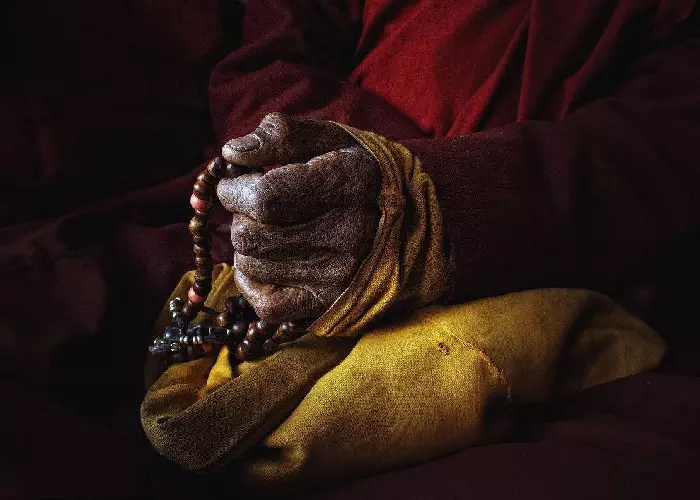
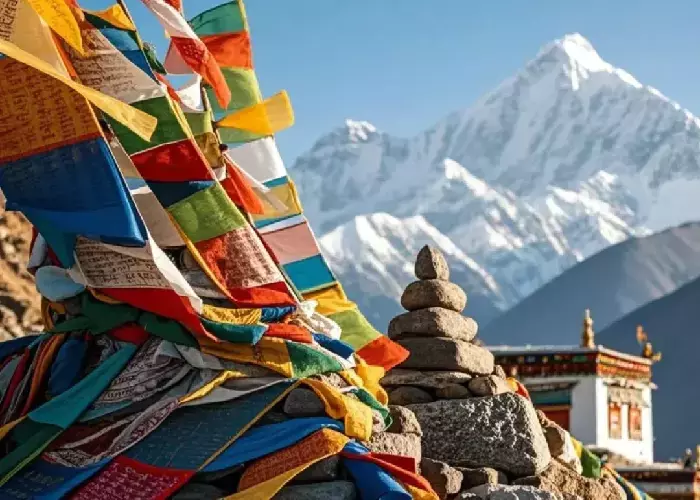
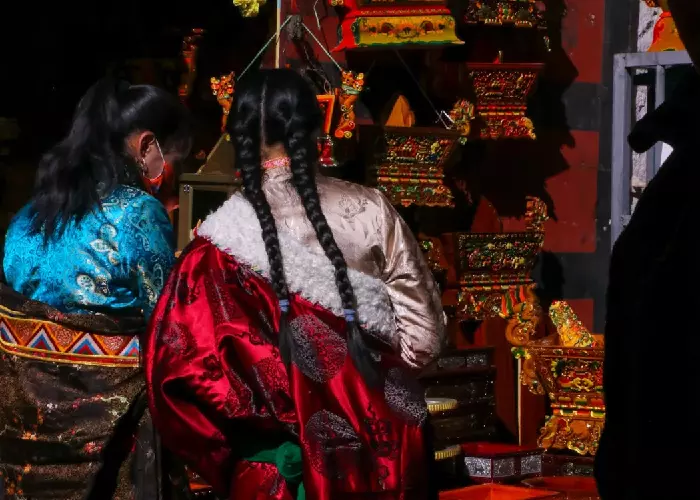
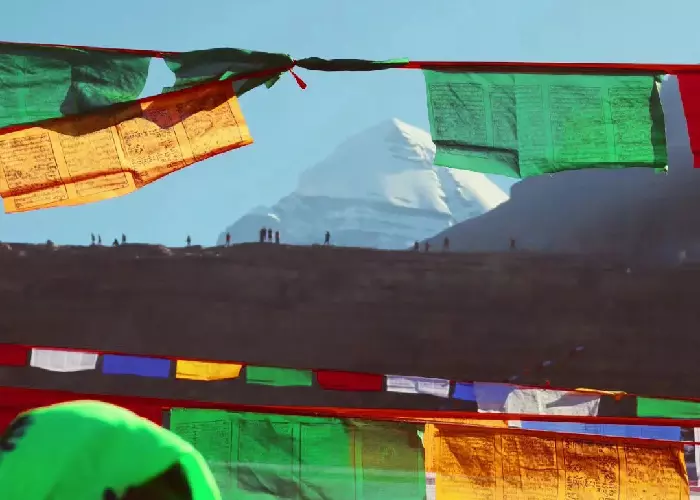
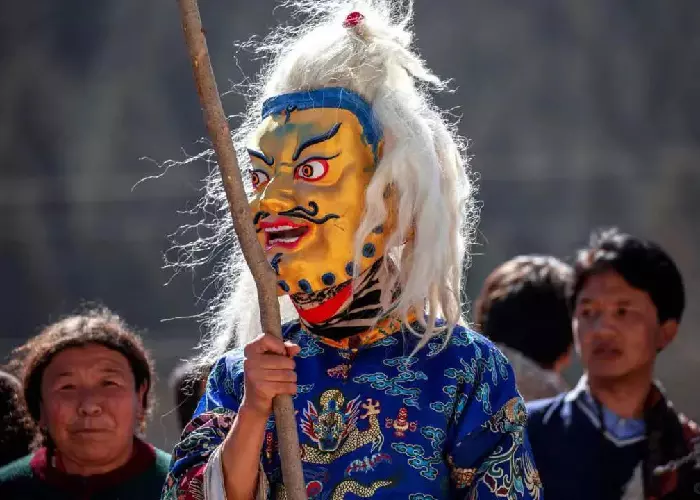
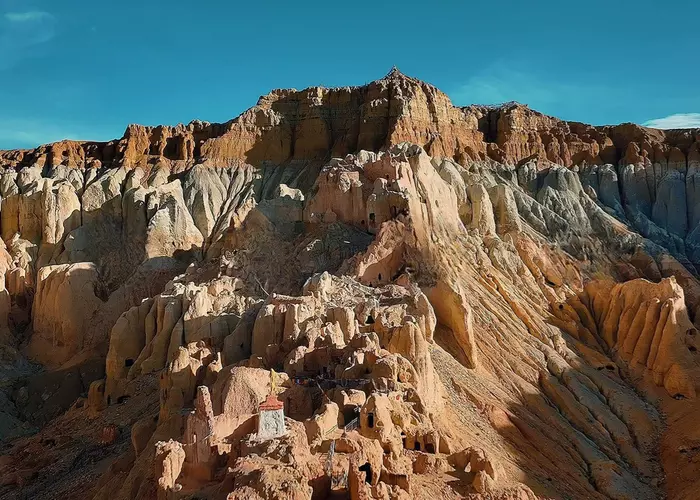
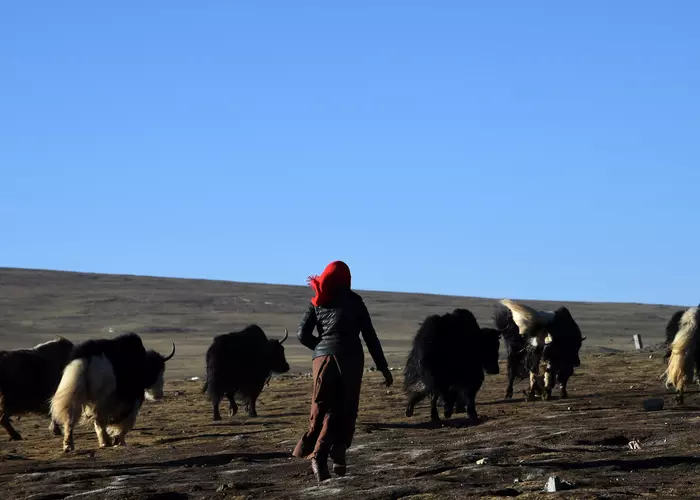
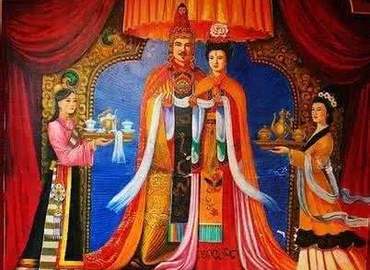
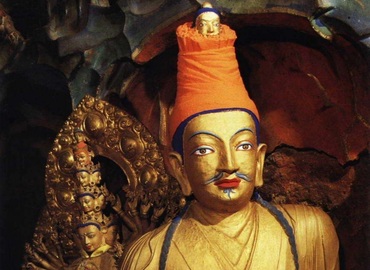
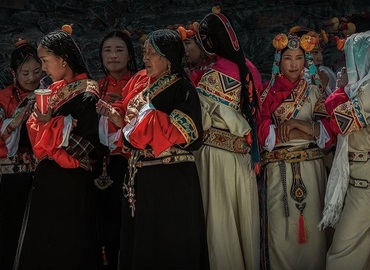
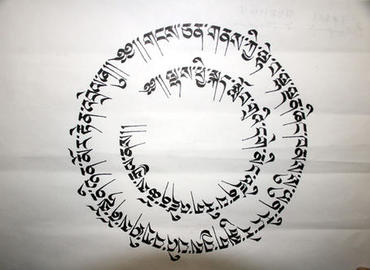
 Tea in Tibet is said to have been brought by Princess Wencheng as a dowry. Throughout history, the people here have developed a Tibetan diet, among which butter tea is a wholesome drink known for its nutrition and unique making method. Butter tea can produce high calories, which can prevent cold in high-altitude regions. It is a very suitable tea in Tibet. Until now, the tea culture on the Tibetan Plateau has developed for over one thousand years.
Tea in Tibet is said to have been brought by Princess Wencheng as a dowry. Throughout history, the people here have developed a Tibetan diet, among which butter tea is a wholesome drink known for its nutrition and unique making method. Butter tea can produce high calories, which can prevent cold in high-altitude regions. It is a very suitable tea in Tibet. Until now, the tea culture on the Tibetan Plateau has developed for over one thousand years. Due to the differences in natural conditions, customs, cultural traditions, and dialects across the Qinghai-Tibet Plateau, Tibetan Opera has developed into several varieties and schools. Tibetan Opera originated 600 years ago, 400 years earlier than Beijing Opera, so it’s been called the living fossil. The art of Tibetan opera was derived from Tibetan opera, which is spread by the monks and pilgrims to the Tibetan areas in Qinghai, Gansu, Sichuan, and Yunnan. It’s also been circulated to India and Bhutan.
Due to the differences in natural conditions, customs, cultural traditions, and dialects across the Qinghai-Tibet Plateau, Tibetan Opera has developed into several varieties and schools. Tibetan Opera originated 600 years ago, 400 years earlier than Beijing Opera, so it’s been called the living fossil. The art of Tibetan opera was derived from Tibetan opera, which is spread by the monks and pilgrims to the Tibetan areas in Qinghai, Gansu, Sichuan, and Yunnan. It’s also been circulated to India and Bhutan. Prayer flags were used as talismans to protect Tibetans during the war, starting from the Bon religion. It’s printed with the Buddhist scriptures. The locals believe that every time the prayer flags blow in the wind, it means chanting sutras once and conveying good wishes. For this reason, long prayer flags are tied to windy places, such as high passes and riversides; short prayer flags are tied on the branches of trees in front of squares and monasteries.
Prayer flags were used as talismans to protect Tibetans during the war, starting from the Bon religion. It’s printed with the Buddhist scriptures. The locals believe that every time the prayer flags blow in the wind, it means chanting sutras once and conveying good wishes. For this reason, long prayer flags are tied to windy places, such as high passes and riversides; short prayer flags are tied on the branches of trees in front of squares and monasteries. Sky burial is a traditional way of burial in Tibet. After death, the body will be dismembered and taken to a particular place to feed vultures. It is not the only kind of burial, but it is the most popular way to dispose of the dead in Tibet.
Sky burial is a traditional way of burial in Tibet. After death, the body will be dismembered and taken to a particular place to feed vultures. It is not the only kind of burial, but it is the most popular way to dispose of the dead in Tibet. Sand Mandala, དཀྱིལ་འཁོར། in Tibetan, is the most exquisite Buddhist art in Tibet. The monks in the monastery use colorful sand to paint their ideal Buddhist world during significant religious events. They may paint it for several days or even months.
Sand Mandala, དཀྱིལ་འཁོར། in Tibetan, is the most exquisite Buddhist art in Tibet. The monks in the monastery use colorful sand to paint their ideal Buddhist world during significant religious events. They may paint it for several days or even months.